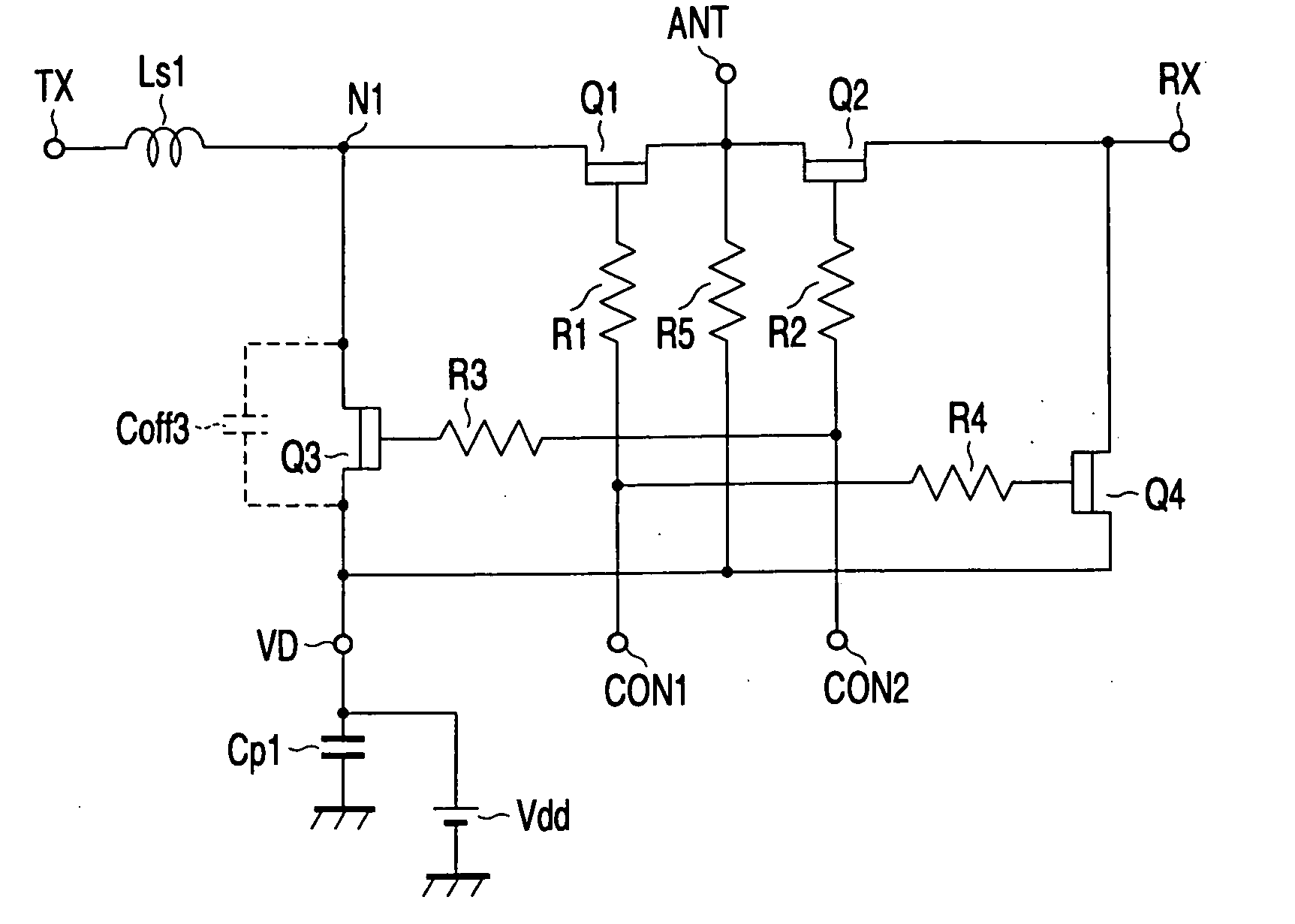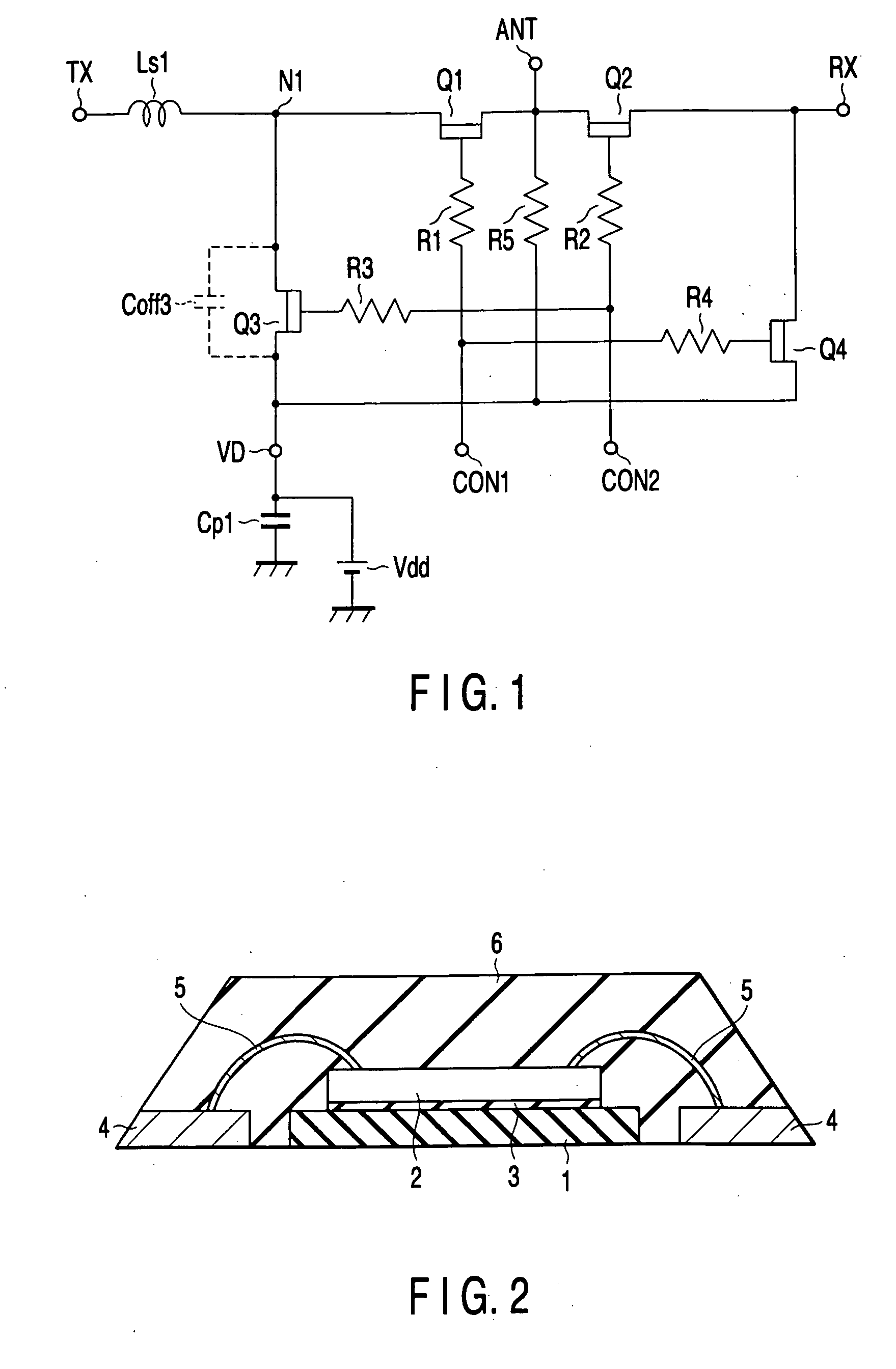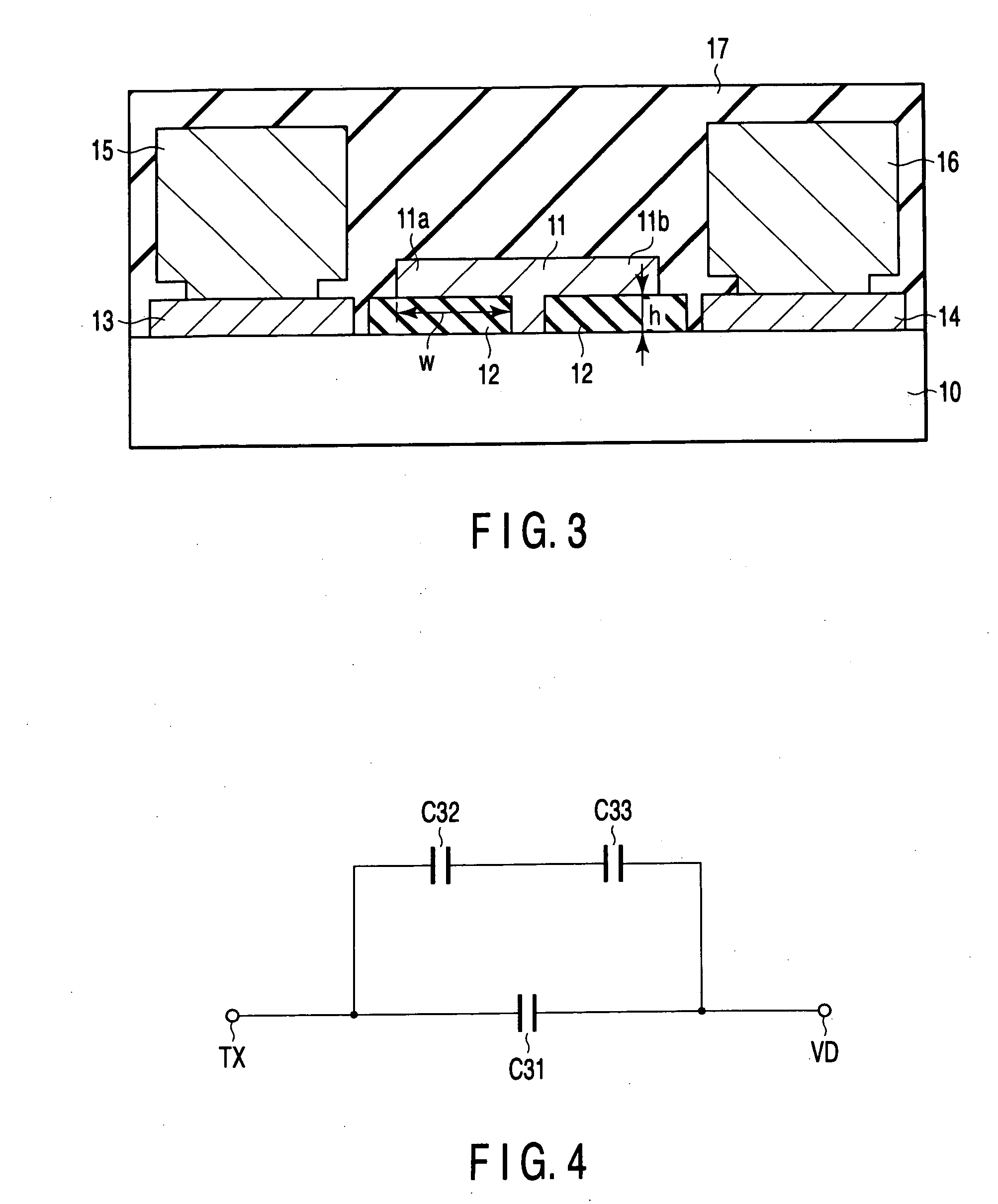High-frequency switch circuit and high-frequency transmitting/receiving apparatus
a switch circuit and high-frequency technology, applied in the field of high-frequency switch circuits, can solve the problems of limited resistance and off-capacitance, limited isolation, and loss of spdt, and achieve the effect of greater off-capacitance for the width of the unit ga
- Summary
- Abstract
- Description
- Claims
- Application Information
AI Technical Summary
Benefits of technology
Problems solved by technology
Method used
Image
Examples
first embodiment
[0041]FIG. 1 is a circuit diagram that shows an SPDT switch according to the first embodiment of the invention. The SPDT switch has an antenna terminal ANT, a transmission terminal TX, a receipt terminal RX, two control terminals CON1 and CON2, and a power-supply voltage terminal VD.
[0042] The antenna terminal ANT is connected to an antenna. The transmission terminal TX is connected to the output of a high-frequency power amplifier (not shown) that is configured to amplify, for example, a signal to be transmitted. The signal to be transmitted is supplied to the transmission terminal TX. The receipt terminal RX is connected to the input of a receiving-side low noise amplifier (not shown). This terminal RX receives a signal from the antenna terminal ANT.
[0043] The power-supply voltage Vdd is applied to the power-supply voltage terminal VD. The terminal VD is connected to a decoupling capacitor Cp1, which is connected to the ground. In other words, the terminal VD is grounded for a h...
second embodiment
[0078] The second embodiment of the invention is an SPDT switch, too. This SPDT switch has metal wires that differ in shape from those used in the first embodiment. The shunt FET Q3 therefore has a larger off-capacitance than its counterpart of the first embodiment.
[0079]FIG. 5 is a sectional view depicting the structure of the transmitting-side shunt FET Q3 incorporated in the SPDT switch according to the second embodiment. A metal wire 15 has an overhang 15a that overlaps the gate electrode 11. An inter-layer insulating layer 17 fills the gap between the gate electrode 11 and the overhang 15a. A metal wire 16 has an overhang 16a that overlaps the gate electrode 11. The inter-layer insulating layer 17 fills the gap between the gate electrode 11 and the overhang 16a. Note that the gate electrode 11 has two overhangs 11a and 11b as in the first embodiment.
[0080]FIG. 6 is an equivalent-circuit diagram of the off-capacitance at the shunt FET Q3 shown in FIG. 5. Capacitance C34 is cap...
third embodiment
[0084] The third embodiment of the invention is also an SPDT switch. This SPDT switch has a shunt FET Q3 that is a multi-gate FET. Namely, the shunt FET Q3 has a plurality of gates and therefore exhibits a high withstand voltage to the input signal. Including a multi-gate FET, the SPDT switch has a high withstand voltage to high-frequency signals.
[0085]FIG. 7 is a sectional view depicting the structure of the transmitting-side shunt FET Q3 provided in the third embodiment. As seen from FIG. 7, the shunt FET Q3 is a triple-gate FET, i.e., an FET having three gate electrodes 11, 18 and 19.
[0086] The gate electrodes 18 and 19, each having a T-shaped cross section, are formed on the semiconductor substrate 10. Insulating films 20 are provided between the overhangs of the gate electrode 18 and the semiconductor substrate 10. Insulating films 20 are interposed between the overhangs of the gate electrode 19 and the semiconductor substrate 10. The insulating films 20 are made of, for exam...
PUM
 Login to View More
Login to View More Abstract
Description
Claims
Application Information
 Login to View More
Login to View More - R&D
- Intellectual Property
- Life Sciences
- Materials
- Tech Scout
- Unparalleled Data Quality
- Higher Quality Content
- 60% Fewer Hallucinations
Browse by: Latest US Patents, China's latest patents, Technical Efficacy Thesaurus, Application Domain, Technology Topic, Popular Technical Reports.
© 2025 PatSnap. All rights reserved.Legal|Privacy policy|Modern Slavery Act Transparency Statement|Sitemap|About US| Contact US: help@patsnap.com



